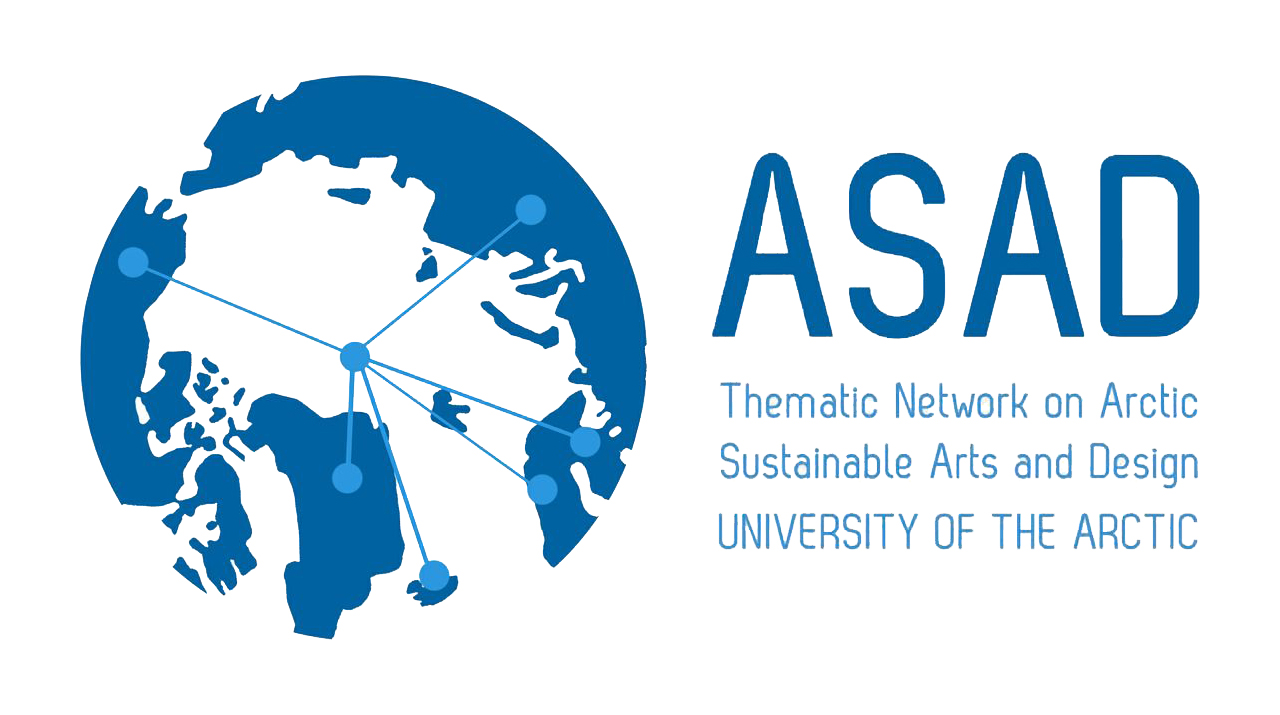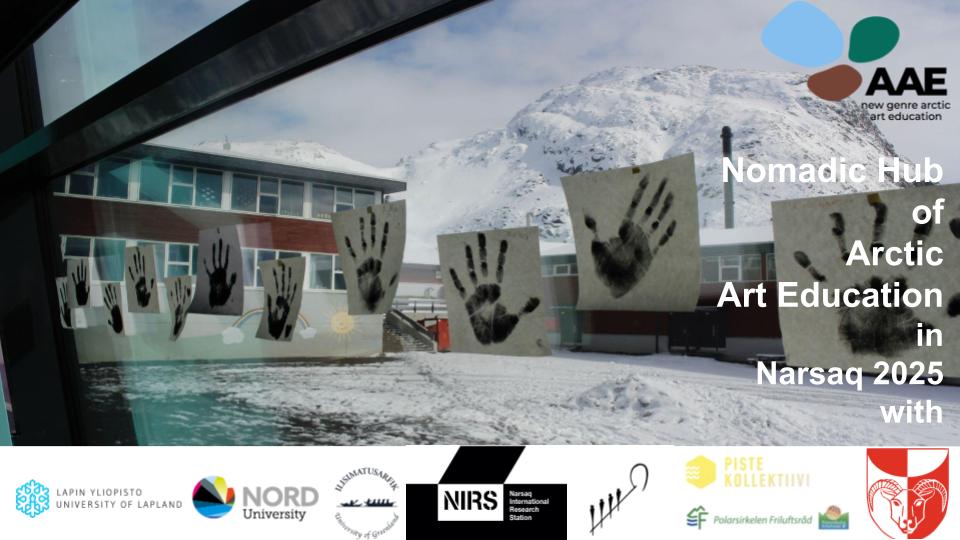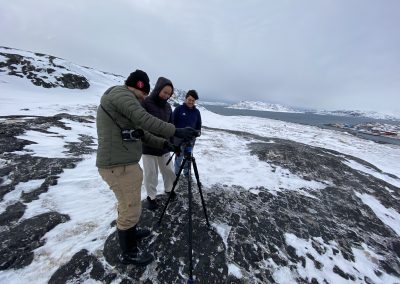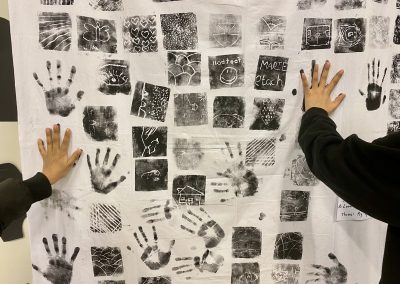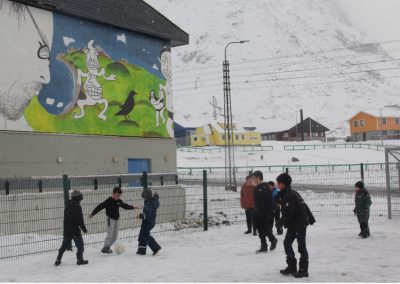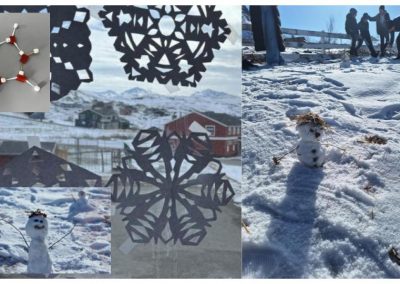The Nomadic Hub on New Genre Arctic Art Education (AAE) is a collaborative initiative of the Thematic Networks on Arctic Sustainable Art and Design (ASAD) and Children of the Arctic, aimed at developing culturally, socially, and ecologically sustainable approaches to art education in the context of the rapidly changing northern regions. Coordinated by the University of Lapland, this initiative utilises the Nomadic Hub as a key methodological and pedagogical tool for engaging with Arctic communities and environments.
For researchers, artists, and educators from participating circumpolar universities, the initiative serves as a platform for the development and critical inquiry of Arctic art education. For university students, it functions as an international course, beginning with distance learning and culminating in immersive fieldwork through artistic practices. In addition to academic partners, cross-sectoral collaborators contribute valuable expertise to this interdisciplinary endeavour. The Nomadic Hub is designed to be flexible and responsive, adapting to local contexts and community needs. It is hosted annually in various locations across the Arctic and northern regions.
-
I see the fieldwork of Nomadic Hub of art education as a compelling example of the UArctic’s commitment to fostering interdisciplinary collaboration, involving northern residents in academic activities, and reinforcing ties with Indigenous and multiethnic communities through decolonial research and education, stated Professor Emeritus Timo Jokela, initiator of the AAE initiative.
This year, the course—consisting of distance education and field-based school components—was organized not only by the University of Lapland but also in collaboration with Ilisimatusarfik – University of Greenland, the Siunissaq Association for Art and Social Psychology, the Narsaq International Research Station (NIRS), and the Municipality of Kujalleq in Greenland. From Norway, Nord University and the Polar Circle Outdoor Education Association, participated. From Finland, the Piste Multidisciplinary Arts Association contributed through movement- and drama-based pedagogy.
Artistic activities in Narsaq, an Inuit community of approximately 2,000 inhabitants, offered teacher educators, doctoral researchers, and students of education and the arts a unique opportunity to engage with Greenlandic lifeways and schooling—encountering both possibilities and tensions.
-
Inside the school building, we might have been in any Nordic comprehensive school. But stepping outside, we entered a unique environment and culture where the children and youth were the experts—and we, the learners. In developing Arctic art education, we reflected on how to bring this eco-cultural knowledge into focus as central to learning and encounter, summarised Annamari Manninen, university lecturer and project coordinator.
Representatives from the Narsaq community—including local museum staff, cultural coordinators, teachers, youth workers, care home employees, pupils, and young people—were actively engaged in this interdisciplinary collaboration. The resulting artworks, created both collaboratively and individually, were presented in a pop-up exhibition that attracted around 100 visitors interested in the initiative.
-
The art workshops revealed meanings tied to everyday life and place, combining art and science. The final exhibition shared these works with the community, creating space for encounters and dialogue between different actors, while also strengthening local identity,explained Manninen.
Workshops also addressed Indigenous cultures, decolonisation, and sustainability transformation. As part of the Finnish Sustainability Transformation Doctoral Pilot (SusTra), doctoral researchers Suvi Autio and Niko Väistö guided the production of a short film by youth from the secondary school Inusullivik.
-
Storytelling helped the youth shape their sense of identity. Their short film explored themes such as the continuity of hunting traditions, local handicrafts, future studies, and the preservation of Greenland in the face of mining threats, noted the facilitators.
The activities of AAE and its sub-projects are currently supported by funding from the Nordic Council of Ministers / Nordplus Horizontal, DAHES / UArctic, and the Lessons of the Land project coordinated by Memorial University of Canada, funded by the Indigenous and Northern Collaborative Research and Education Fund. Also, the Finnish Sustainability Transformations Doctoral Education Pilot (SusTra) contributed to the project.
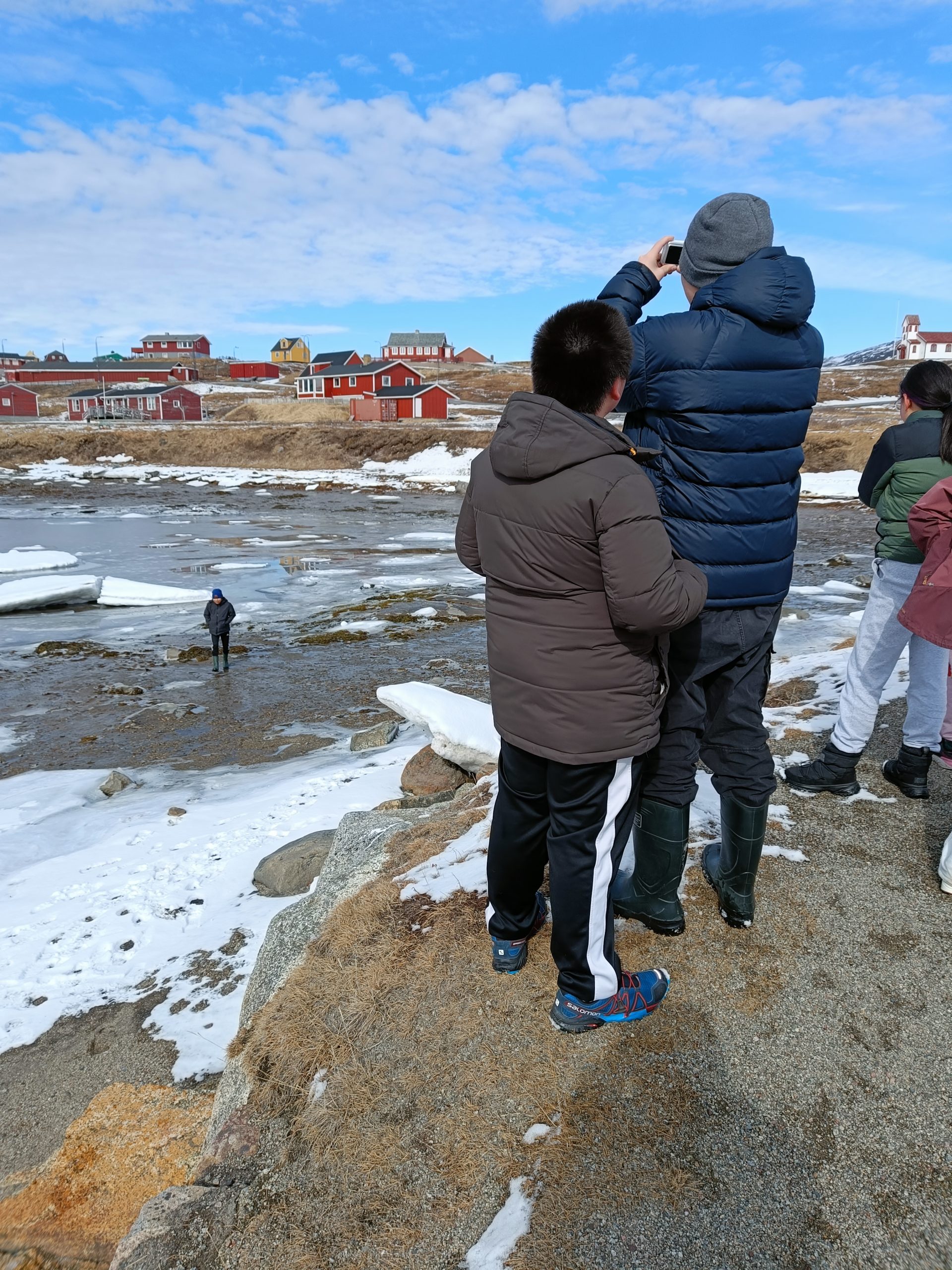
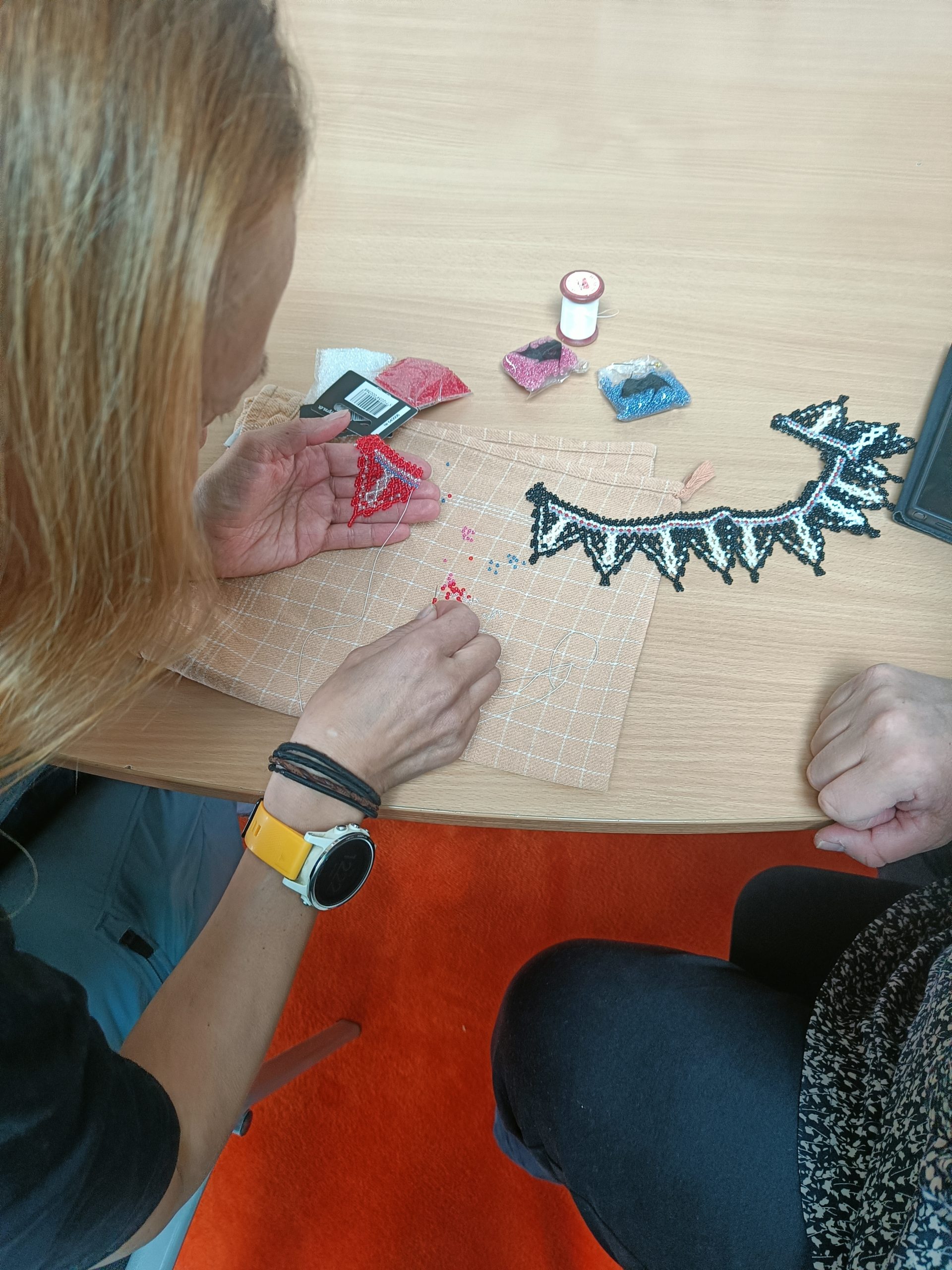
Schoolchildren documenting the unique features of their local environment through photography—playing in snow and on ice. Learning traditional beadwork under the guidance of local instructors. (Photos: Annamari Manninen)
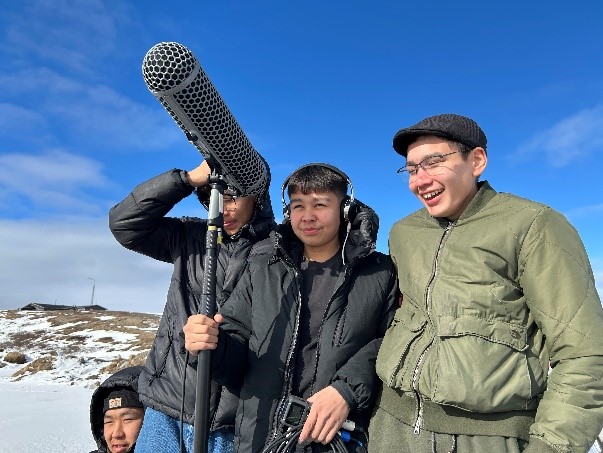
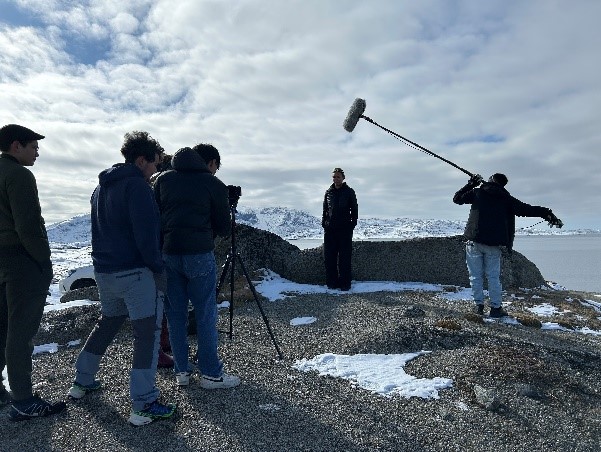
Youth from Narsaq filming a short film. Photos: Niko Väistö, 2025.
Filmmaking
Art education doctoral researcher and filmmaker Niko Väistö guiding young participants in the making of a short film. Photo Suvi Autio.
Detail from the artwork Our Narsaq.
Detail from the artwork Our Narsaq. The shared fabric canvas was circulated through the after-school club, the school, and the care home, where each participant had the opportunity to carve and print their own plate—contributing a personal imprint to the collective piece. Photo: Suvi Autio.
Getting to know traditional dwellings
Getting to know traditional dwellings at the museum with a guide. Photo: Suvi Autio. 2025.
A mural on the old school building’s wall
A mural on the old school building’s wall greeted newcomers by commenting the encounter between Western and Greenlandic knowledge systems. Photo: Timo Jokela, 2025.
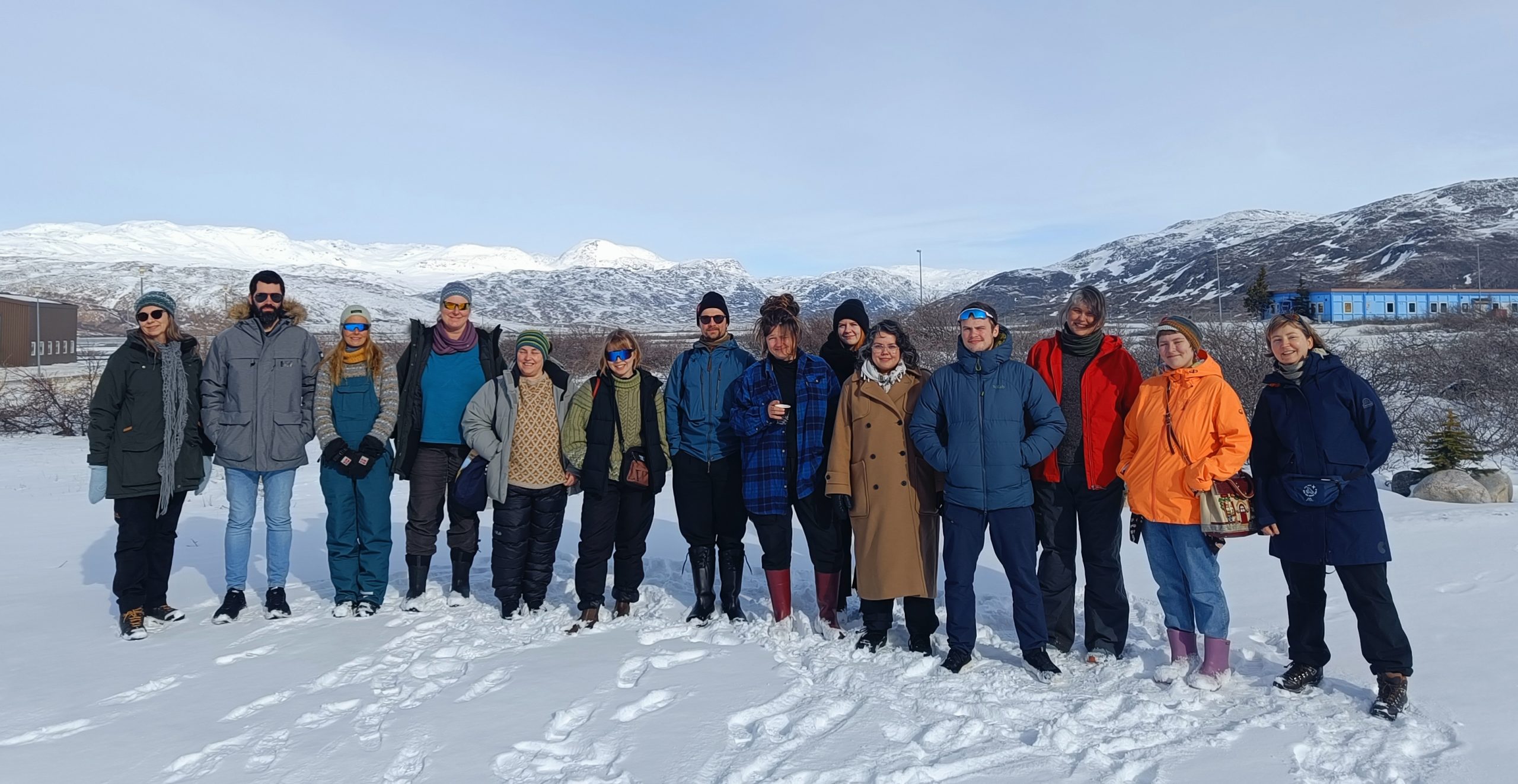
Researchers, university lecturers, and students from the Nord University and University of Lapland project team in a group photo. From left: Wenche Sørmo, Mats Dale, Rebekka Braaten, Karin Stoll, Ann-Kristin Klausen, Taru Kallio, Niko Väistö, Suvi Autio, Sani Kiuru, Rutt Olsen, Lars Solbakk, Mette Gårdvik, Hanna Kukko & Annamari Manninen (Missing from the picture group members Hanna-Leena Metsävainio, Johanna Salo and Timo Jokela) (photo: David Struthers, 2025)
In Collaboration
- New Genre Arctic Art Education: Development Project
- Lessons of the Land
- Community Art-Based Sustainability in the Arctic
- Sustainability Transformations Doctoral Education Pilot (SusTra)
- ASAD and the Children of the Arctic -networks
